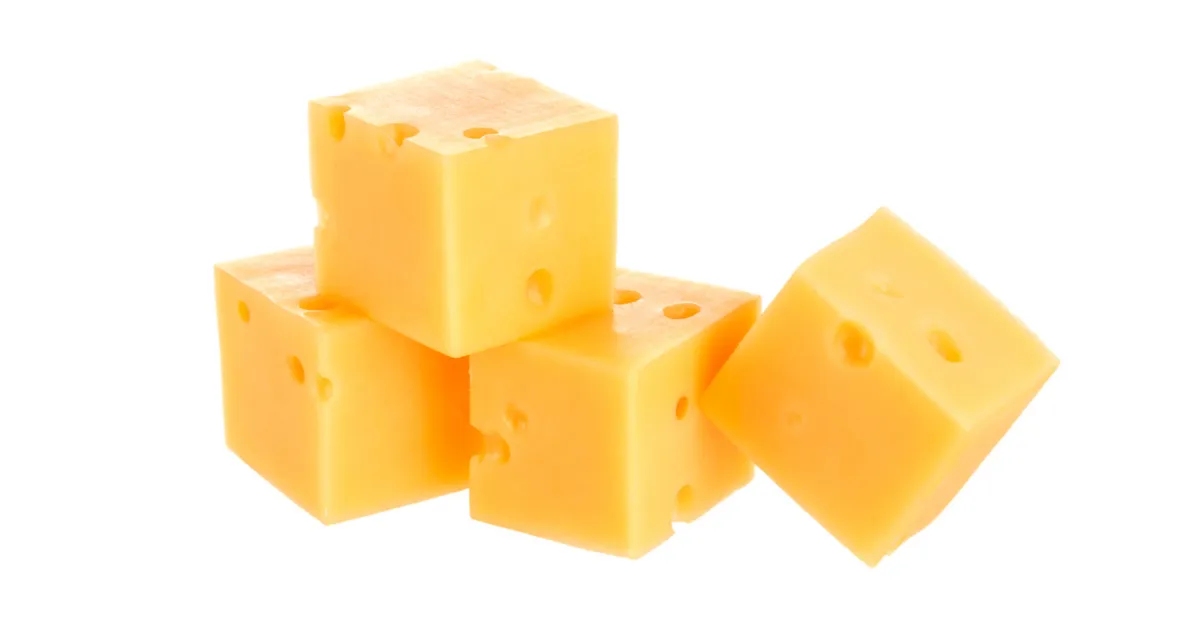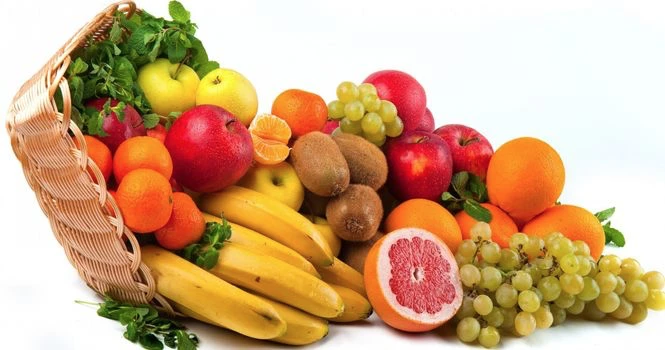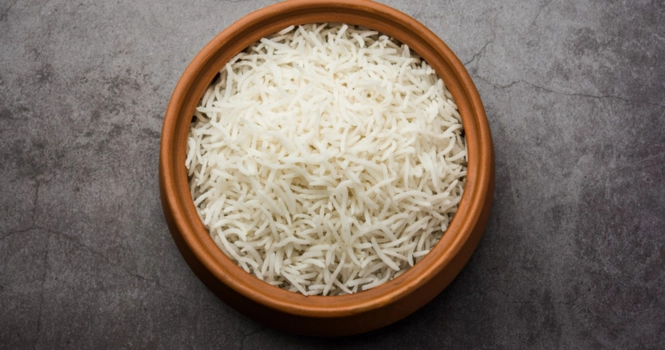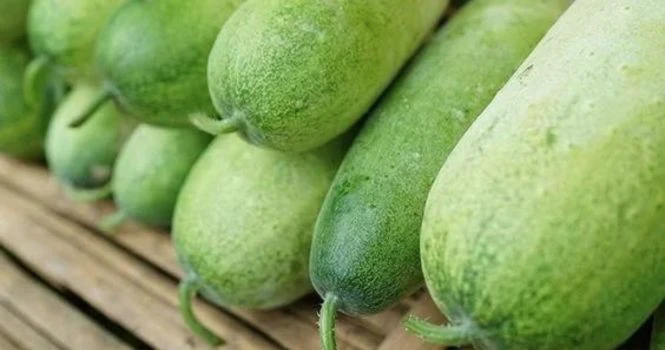Best High Dietary Fiber Foods to Eat
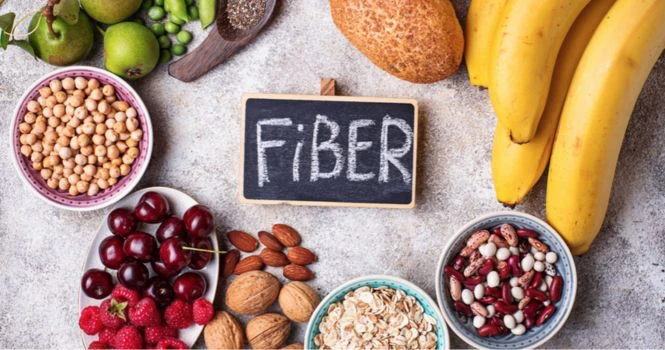
In today’s fast-paced world, maintaining a well-balanced and nutritious diet is more important than ever. Consuming sufficient High Dietary fiber foods is a crucial aspect of achieving optimal health, as it plays a significant role in digestion, weight management, and overall well-being.
Remember the fiber requires water to move out of the system, so keeping yourself hydrated at all times is very important.
Why is Fiber Important to our body?
Fiber, also known as dietary fiber or roughage, is a type of carbohydrate found in plant-based foods that is not easily digested or absorbed by the human body. Unlike other carbohydrates, such as sugars and starches, fiber passes through the digestive system mostly intact, providing various health benefits along the way.
There are two main types of fiber:
1. Soluble fiber:
2. Insoluble fiber:
DIfference between Soluble Fiber and Insoluble Fiber
| Aspect | Soluble Fiber | Insoluble Fiber |
| Definition | Fiber that dissolves in water, forming a gel-like substance in the digestive system. | Fiber that does not dissolve in water, remaining relatively intact as it passes through the digestive system. |
| Function | Helps to regulate blood sugar levels and lower cholesterol. | Aids in digestion, preventing constipation, and promoting regular bowel movements. |
| Health Benefits | – Helps lower LDL (bad) cholesterol – Stabilizes blood sugar levels – Supports heart health | – Improves digestion – Prevents constipation – Adds bulk to stool |
| Food Sources | – Oats – Barley – Legumes (beans, peas, lentils) – Apples – Berries – Psyllium husk | – Whole grains (whole wheat, brown rice, quinoa) – Wheat bran – Nuts and seeds – Vegetables (carrots, celery, broccoli) – Fruit skins |
Health Benefits of Fiber
1. Digestive Health: Fiber aids in digestion by adding bulk to the stool, which helps prevent constipation and promotes regular bowel movements. It also helps maintain a healthy balance of gut bacteria, which supports the immune system and overall gastrointestinal health.
2. Weight Management: High-fiber foods are typically more filling and take longer to chew and digest, which can help control appetite and prevent overeating. They also tend to be lower in calories, making them a beneficial addition to weight management diets.
3. Blood Sugar Control: Soluble fiber can help slow down the absorption of sugar, leading to more stable blood sugar levels and reducing the risk of blood sugar spikes. This is particularly important for individuals with diabetes or those at risk of developing the condition.
4. Heart Health: Soluble fiber has been shown to help lower LDL (bad) cholesterol levels by binding to cholesterol in the digestive system and removing it from the body. A diet rich in fiber may also help reduce inflammation and lower blood pressure, both of which contribute to better heart health.
5. Cancer Prevention: Some studies suggest that a high-fiber diet may reduce the risk of certain types of cancer, such as colorectal cancer. Fiber aids in moving waste through the digestive tract more quickly, potentially reducing exposure to harmful substances.
6. Longevity: Research has indicated that consuming adequate fiber may be associated with a lower risk of mortality from various causes, including heart disease and certain cancers.
Incorporating High Dietary Fiber foods into your diet is essential for maintaining overall health and wellness. To reap the benefits of fiber, aim for a balanced diet that includes a variety of whole grains, fruits, vegetables, legumes, nuts, and seeds.
Recommended Intake of Fiber
| Age Group & Gender | Recommended Daily Fiber Intake |
| Adult Men (19-50 years old) | 38 grams |
| Adult Men (51 years and older) | 30 grams |
| Adult Women (19-50 years old) | 25 grams |
| Adult Women (51 years and older) | 21 grams |
| Pregnant Women | 28 grams |
| Lactating Women | 29 gram |
What happens due to lack of fiber intake?
A lack of fiber intake can lead to several health issues, as fiber is essential for maintaining proper digestive function, regulating blood sugar levels, and supporting heart health. Some potential consequences of insufficient fiber intake include:
1. Constipation: A lack of fiber can cause the stool to become hard and difficult to pass, leading to constipation and irregular bowel movements. Over time, chronic constipation can contribute to the development of more severe digestive issues, such as hemorrhoids or fecal impaction.
2. Poor Blood Sugar Control: Without enough soluble fiber to slow down the absorption of sugar, blood sugar levels can become unstable, potentially leading to spikes and crashes. This can be particularly problematic for individuals with diabetes or those at risk of developing the condition.
3. Increased Cholesterol Levels: Soluble fiber helps to lower LDL (bad) cholesterol levels by binding to cholesterol in the digestive system and removing it from the body. A diet low in fiber may contribute to increased cholesterol levels and a higher risk of cardiovascular disease.
4. Weight Gain: Fiber-rich foods are typically more filling and take longer to chew and digest, which can help control appetite and prevent overeating. A diet lacking in fiber may lead to increased caloric intake and weight gain over time.
5. Increased Risk of Certain Cancers: Some studies suggest that a high-fiber diet may reduce the risk of certain types of cancer, such as colorectal cancer. A lack of fiber could potentially increase the risk of developing these cancers.
6. Reduced Gut Health: Fiber helps maintain a healthy balance of gut bacteria, which is essential for overall gastrointestinal health and immune system function. A lack of fiber may negatively impact gut health, leading to a variety of digestive issues.
To avoid these health problems, it is important to consume an adequate amount of fiber daily by incorporating a variety of whole grains, fruits, vegetables, legumes, nuts, and seeds into your diet.
List of High Dietary Fiber Foods
High Fiber Vegetables
| Vegetable | Fiber Content (grams) | Serving Size |
| Artichoke | 6.9 | 1 medium artichoke |
| Brussels sprouts | 4.1 | 1 cup (cooked) |
| Broccoli | 5.1 | 1 cup (cooked) |
| Green peas | 8.8 | 1 cup (cooked) |
| Spinach | 4.3 | 1 cup (cooked) |
| Sweet potato | 3.8 | 1 medium (baked, with skin) |
| Carrots | 3.6 | 1 cup (chopped, raw) |
| Cauliflower | 2.5 | 1 cup (cooked) |
| Collard greens | 7.6 | 1 cup (cooked) |
| Swiss chard | 3.7 | 1 cup (cooked) |
High Dietary Fiber Fruits
| Fruit | Fiber Content (grams) | Serving Size |
| Raspberries | 8 | 1 cup (raw) |
| Blackberries | 7.6 | 1 cup (raw) |
| Pears | 5.5 | 1 medium pear (with skin) |
| Apples | 4.4 | 1 medium apple (with skin) |
| Strawberries | 3 | 1 cup (halved, raw) |
| Banana | 3.1 | 1 medium banana |
| Orange | 3.1 | 1 medium orange |
| Kiwi | 2.1 | 1 medium kiwi (without skin) |
| Blueberries | 3.6 | 1 cup (raw) |
| Avocado | 6.7 | 1/2 medium avocado |
Nuts and Seeds
| Nuts and Seeds | Fiber Content (grams) | Serving Size |
| Chia seeds | 10.6 | 1 oz (28 grams) |
| Almonds | 3.5 | 1 oz (28 grams, about 23 nuts) |
| Pistachios | 2.9 | 1 oz (28 grams, about 49 nuts) |
| Walnuts | 1.9 | 1 oz (28 grams, about 14 halves) |
| Sunflower seeds | 3 | 1 oz (28 grams) |
| Pumpkin seeds | 1.7 | 1 oz (28 grams) |
| Flaxseeds | 7.6 | 2 tablespoons (20 grams) |
| Sesame seeds | 3.3 | 1 oz (28 grams) |
| Pecans | 2.7 | 1 oz (28 grams, about 19 halves) |
| Hazelnuts | 2.7 | 1 oz (28 grams, about 21 nuts) |
High Fiber Legumes
| Legumes | Fiber Content (grams) | Serving Size |
| Lentils | 15.6 | 1 cup (cooked) |
| Black beans | 15 | 1 cup (cooked) |
| Navy beans | 19.1 | 1 cup (cooked) |
| Kidney beans | 13.1 | 1 cup (cooked) |
| Pinto beans | 15.4 | 1 cup (cooked) |
| Chickpeas (Garbanzo beans) | 12.5 | 1 cup (cooked) |
| Split peas | 16.3 | 1 cup (cooked) |
| Lima beans | 13.2 | 1 cup (cooked) |
| Green peas | 8.8 | 1 cup (cooked) |
| Black-eyed peas | 11.1 | 1 cup (cooked) |
Grains
| Grains | Fiber Content (grams) | Serving Size |
| Barley (Pearled) | 6 | 1 cup (cooked) |
| Bulgur | 8.2 | 1 cup (cooked) |
| Farro | 3.9 | 1/2 cup (cooked) |
| Brown rice | 3.5 | 1 cup (cooked) |
| Quinoa | 5.2 | 1 cup (cooked) |
| Whole wheat pasta | 6.3 | 1 cup (cooked) |
| Oats (Old-fashioned) | 4 | 1 cup (cooked) |
| Millet | 2.3 | 1 cup (cooked) |
| Buckwheat groats | 4.5 | 1 cup (cooked) |
| Wild rice | 3 | 1 cup (cooked) |
Tubers and Root Vegetables
| Tubers and Root Vegetables | Fiber Content (grams) | Serving Size |
| Sweet potato | 3.8 | 1 medium (baked, with skin) |
| Beets | 3.8 | 1 cup (cooked, sliced) |
| Carrots | 3.6 | 1 cup (chopped, raw) |
| Turnips | 4.6 | 1 cup (cooked, mashed) |
| Parsnips | 5.6 | 1 cup (cooked, sliced) |
| Rutabaga | 4.1 | 1 cup (cooked, mashed) |
| Jicama | 6 | 1 cup (raw, sliced) |
| Jerusalem artichoke | 2.4 | 1/2 cup (cooked) |
| Radishes | 1.9 | 1 cup (sliced, raw) |
| Celery root (Celeriac) | 2.8 | 1 cup (cooked, mashed) |
Fungi (mushrooms)
| Fungi (Mushrooms) | Fiber Content (grams) | Serving Size |
| White button | 1.6 | 1 cup (cooked, sliced) |
| Cremini | 1.6 | 1 cup (cooked, sliced) |
| Shiitake | 2 | 1 cup (cooked, sliced) |
| Portobello | 1.9 | 1 cup (cooked, sliced) |
| Oyster | 2.3 | 1 cup (cooked, sliced) |
| Maitake | 2.1 | 1 cup (cooked, chopped) |
| Chanterelle | 1.9 | 1 cup (cooked, sliced) |
| Morel | 2.8 | 1 cup (cooked, sliced) |
| Enoki | 1.1 | 1 cup (cooked, sliced) |
| King oyster | 2 | 1 cup (cooked, sliced) |
Frequently Asked Questions
1. How much fiber per day?
The daily recommended fiber intake for adults varies by age and sex. For men aged 50 and younger, it is 38 grams per day, while for men aged 51 and older, it is 30 grams per day. For women aged 50 and younger, it is 25 grams per day, and for women aged 51 and older, it is 21 grams per day.
2. What food is highest in fiber?
Some of the foods highest in fiber include lentils, black beans, split peas, chia seeds, and artichokes. However, the fiber content can vary depending on the food’s preparation method.
3. What are the 10 best foods for fiber?
Some of the best high-fiber foods include:
– Lentils
– Black beans
– Chia seeds
– Artichokes
– Raspberries
– Pears
– Almonds
– Barley
– Sweet potatoes
– Broccoli
4. What fruit is highest in fiber?
Raspberries and blackberries are among the fruits with the highest fiber content.
5. How can I increase my fiber?
To increase fiber intake, include more fruits, vegetables, whole grains, legumes, nuts, and seeds in your diet. Opt for whole grain varieties of bread, pasta, and rice, and choose fruits and vegetables with the skin on when possible.
6. How can I get 30g of fiber a day?
To get 30 grams of fiber a day, incorporate a variety of high-fiber foods into your meals and snacks, such as fruits, vegetables, legumes, whole grains, nuts, and seeds. Try to include a source of fiber with every meal and snack to help meet your daily requirement.
7. What fiber should I eat everyday?
Aim to consume a mix of soluble and insoluble fiber each day. Soluble fiber can be found in foods like oats, apples, beans, and barley, while insoluble fiber is found in foods like whole grains, nuts, seeds, and some fruits and vegetables. Eating a variety of high-fiber foods will help ensure you’re getting both types of fiber.
8. Is rice high in fiber?
Brown rice is relatively high in fiber, with 3.5 grams per 1 cup of cooked rice. White rice, on the other hand, has much less fiber, with about 0.6 grams per 1 cup of cooked rice.
9. What are 5 high fiber foods?
Five high-fiber foods include:
– Lentils
– Chia seeds
– Raspberries
– Artichokes
– Almonds
10. Which nuts are high in fiber?
Nuts high in fiber include almonds, pistachios, pecans, walnuts, and hazelnuts.
11. How can I eat a lot of fiber?
To eat a lot of fiber, incorporate a variety of high-fiber foods into your meals and snacks, such as fruits, vegetables, whole grains, legumes, nuts, and seeds. Include a source of fiber with every meal and snack to help meet your daily fiber requirement.
12. Which vegetables are high in fiber?
High-fiber vegetables include artichokes, broccoli, Brussels sprouts, carrots, spinach, sweet potatoes, and kale.
13. Does papaya have fiber?
Yes, papaya contains fiber. One medium-sized papaya contains about 5.5 grams of fiber.
14. Do cucumbers have fiber?
Yes, cucumbers contain fiber, particularly in their skin. One medium-sized cucumber with skin contains about 1.5 grams of fiber.
15. Are bananas high in fiber?
Bananas contain a moderate amount of fiber, with one medium-sized banana containing about 3.1 grams of fiber.
16. What are fiber vegetables?
Fiber vegetables are vegetables that are high in dietary fiber. Some examples include artichokes, broccoli, Brussels sprouts, carrots, spinach, sweet potatoes, and kale.
17. Should I take fiber daily?
Yes, consuming adequate amounts of fiber daily is important for maintaining good digestive health, regulating blood sugar levels, and supporting a healthy weight.
18. What is the best form of fiber to take?
The best form of fiber to take is through a balanced diet rich in natural, high-fiber foods, including fruits, vegetables, whole grains, legumes, nuts, and seeds. This will ensure you consume a mix of soluble and insoluble fiber. If you’re considering a fiber supplement, consult with a healthcare professional to determine the best option for your needs.
Sources
United States Department of Agriculture (USDA) – FoodData Central:
https://fdc.nal.usda.gov/
National Institutes of Health (NIH) – MedlinePlus – Dietary Fiber:
https://medlineplus.gov/dietaryfiber.html
Centers for Disease Control and Prevention (CDC) – Nutrition for Everyone – Fiber:
https://www.cdc.gov/nutrition/healthy-eating/what-to-eat-whole-grains/fiber.html
Health Canada – Canadian Nutrient File (CNF):
https://food-nutrition.canada.ca/cnf-fce/index-eng.jsp
Australian Government – National Health and Medical Research Council – Nutrient Reference Values for Australia and New Zealand:
https://www.nrv.gov.au/nutrients/dietary-fibre
![]()




